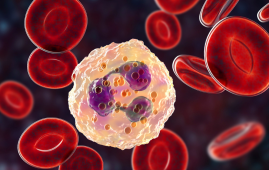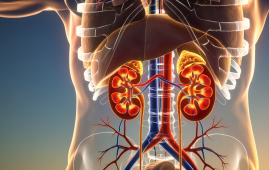

New Lab Model Reveals Gene Mutation Driving Aggressive Blood Cancer
Lab-Grown Cancer Cells Offer Real-Time Insight
A new cell culture model developed by researchers at the University of Birmingham is changing the landscape of Blood Cancer research. The model, created using induced pluripotent stem cells (iPSCs) from a patient diagnosed with myelodysplastic syndromes (MDS), replicates the disease’s progression into acute myeloid leukaemia (AML), an aggressive and often treatment-resistant form of cancer.
This breakthrough enables scientists to simulate disease progression in vitro and monitor how specific gene mutations influence malignancy. The model provides a realistic environment for drug screening, allowing researchers to test novel treatments and uncover mechanisms behind chemotherapy resistance.
CEBPA Mutation Triggers Malignancy and Resistance
The team’s research confirmed that a mutation in the CEBPA gene significantly contributes to the transformation from MDS to AML. The study involved taking blood samples from a patient early in their MDS diagnosis and later during AML progression. Using genome engineering, researchers introduced the CEBPA mutation into iPSCs and observed alarming outcomes: impaired white blood cell formation, rapid aberrant cell division, and reduced healthy cell counts, even under chemotherapy.
Further analysis revealed the mutation disrupted DNA structure and altered gene activity, driving malignant behavior. The discovery of how this gene mutation reshapes DNA architecture confirms its role in fueling chemotherapy resistance and opens doors for targeted treatments to interrupt this pathway.
Disease Modeling Accelerates Drug Discovery
Using iPSCs, researchers recreated a timeline of genetic changes identical to the patient’s real disease evolution. This allows for precision testing of therapies tailored to specific genome modifications. Because the cells act like true patient samples, the model is ideal for evaluating therapeutic responses and resistance mechanisms.
This new model offers a crucial platform for screening compounds that may reverse or halt the malignancy caused by the CEBPA mutation.
Future Blood Cancer Therapies
This new cell culture model represents a significant advancement in understanding how aggressive blood cancers evolve. By confirming the role of CEBPA gene mutation in driving the progression from MDS to AML, the research opens new avenues for early diagnosis, targeted treatment, and resistance profiling.
More information: Paloma Garcia et al., A patient-derived iPSC model confirms CEBPA mutation drives progression of myelodysplastic syndromes to acute myeloid leukaemia, Nature Communications (2025). University of Birmingham News.
more recommended stories
 Spatial Computing Explains How Brain Organizes Cognition
Spatial Computing Explains How Brain Organizes CognitionKey Takeaways (Quick Summary) MIT researchers.
 Gestational Diabetes Risk Identified by Blood Metabolites
Gestational Diabetes Risk Identified by Blood MetabolitesKey Takeaways (Quick Summary for Clinicians).
 Phage Therapy Study Reveals RNA-Based Infection Control
Phage Therapy Study Reveals RNA-Based Infection ControlKey Takeaways (Quick Summary) Researchers uncovered.
 Pelvic Floor Disorders: Treatable Yet Often Ignored
Pelvic Floor Disorders: Treatable Yet Often IgnoredKey Takeaways (Quick Summary) Pelvic floor.
 Urine-Based microRNA Aging Clock Predicts Biological Age
Urine-Based microRNA Aging Clock Predicts Biological AgeKey Takeaways (Quick Summary) Researchers developed.
 Circadian Control of Neutrophils in Myocardial Infarction
Circadian Control of Neutrophils in Myocardial InfarctionKey Takeaways for HCPs Neutrophil activity.
 E-Cigarette Use and Heart Attack Risk in Former Smokers
E-Cigarette Use and Heart Attack Risk in Former SmokersKey Takeaways for Clinicians and Nurses.
 36-Week Pre-eclampsia Screening May Reduce Term Risk
36-Week Pre-eclampsia Screening May Reduce Term RiskA New Preventive Strategy for Term.
 Cardiovascular Risk and Sudden Cardiac Death in Diabetes
Cardiovascular Risk and Sudden Cardiac Death in DiabetesRising Sudden Cardiac Death (SCD) Risk.
 Poor Kidney Function and Alzheimer’s Biomarkers Explained
Poor Kidney Function and Alzheimer’s Biomarkers ExplainedPoor kidney function may influence levels.

Leave a Comment